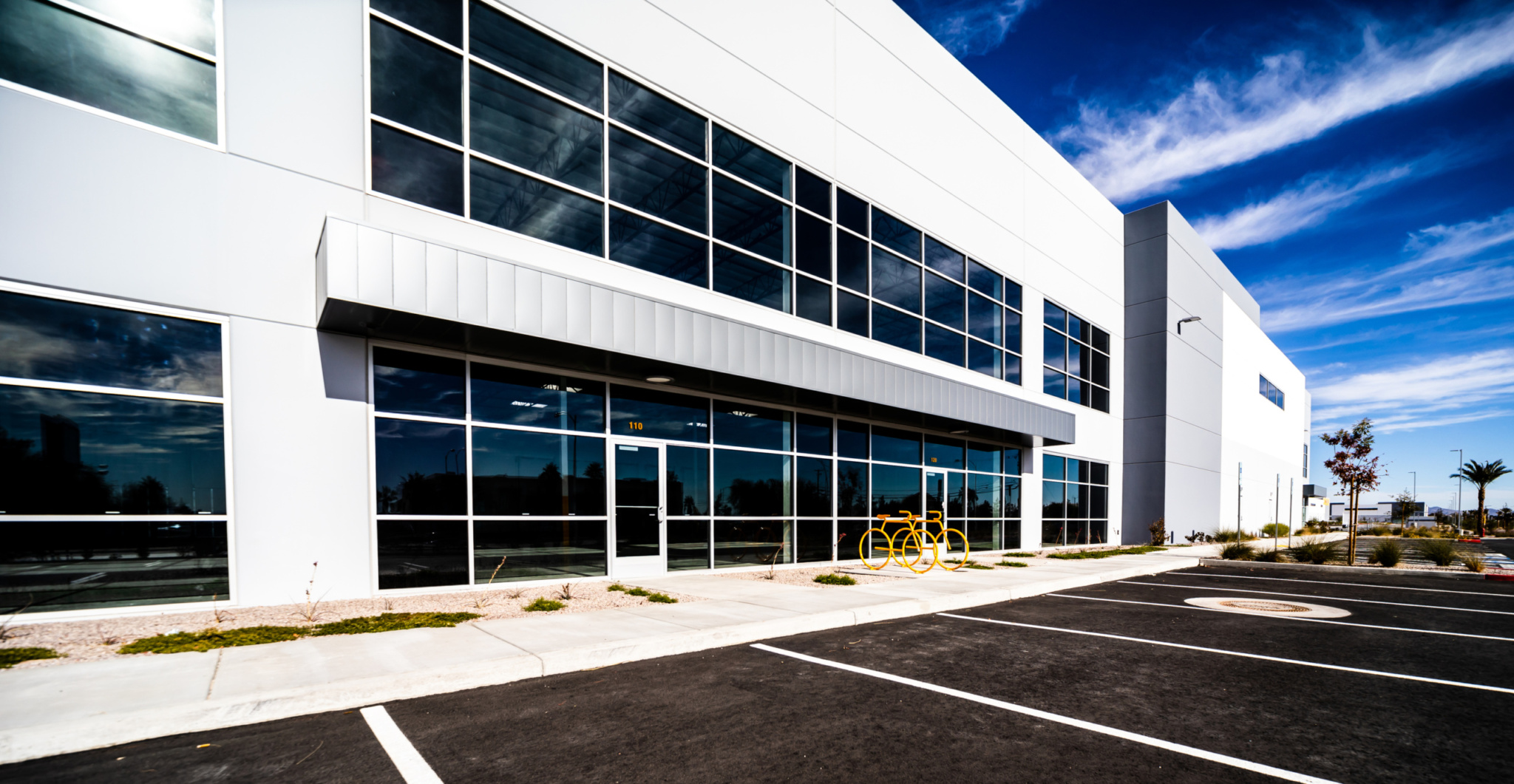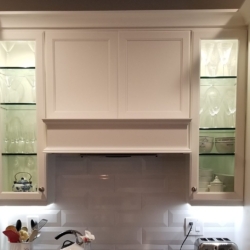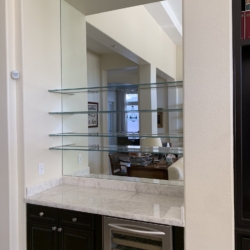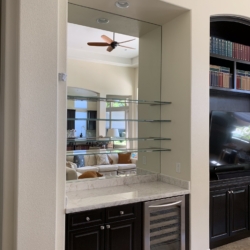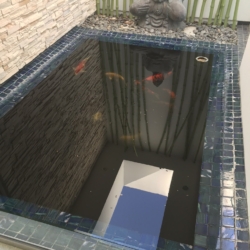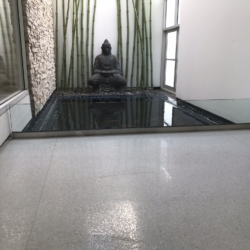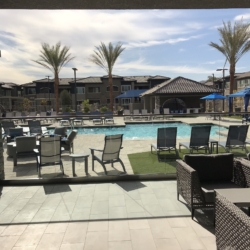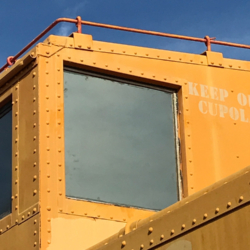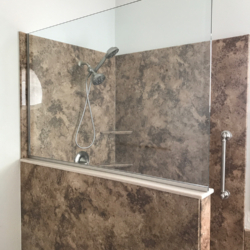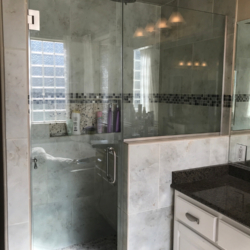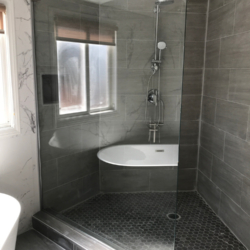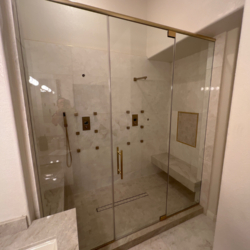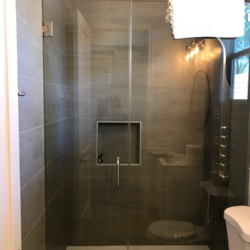Tempered Glass (Safety Glass)
Existing building codes demand safety glazing in doors, glass floors, shower & bathtub enclosures, patio enclosures, and sidelights. Tempered glass is designed to break into thousands of little pieces reducing injury to a person if broken..
Tempered glass
Tempered glass is 4 times stronger than traditional annealed glass. The procedure consists of heating annealed glass in a tempering oven to about 1400 degrees Fahrenheit, then cooling (also known as quenching) it with a blast of cool air for 2 minutes. Once the glass has been tempered you can no longer cut the glass without it completely shattering. As a result of this, all production should be done prior to the glass being heat treated.

Security Glass
Security Glass is usually 2 pieces of glass by means of a plastic internal coating. The most frequent use with this glass is for windows in the automotive industry. The glass is going to keep the traveler inside the car, once the windows is broken. Another typical use is in shops to protect against thievery.
The inside coating is.030 heavy, supplying an extraordinary UV display that might reduce attenuation in cushioned products and carpets. Sound reduction characteristics are also offered by this kind of glass. The main constraint of safety glass, nevertheless, is power. It may break with only 1/8th of the stress needed to separate tempered glass.
Why Tempered Glass is Safety Glass?
Tempered glass is used in applications where standard glass could pose a potential danger, because it is four to five times stronger than standard glass and does not shatter into large shards when broken. Manufactured through a process of extreme heating and rapid cooling, tempered glass is significantly harder than normal glass.
The brittle nature of tempered glass causes it to shatter into small oval-shaped pebbles when broken. This eliminates the danger of sharp edges. Due to this property — along with its strength — tempered glass is often referred to as ‘safety glass.’
The thermal process that cures it also makes it heat-resistant. Tempered glass can be used in any situation where there is a danger of the glass breaking due to impact or extreme heat.
Here at A Cutting Edge Glass and Mirror, we have the capability of tempering glass in many thicknesses and sizes, thanks to our state-of-the-art fabrication facilities and tempering furnace, giving us the flexibility and speed that our customers have come to expect at factory-direct pricing.
Reasons to choose Tempered Glass
- Stronger Tempered glass is 5-8x as impact resistant as ordinary glass, with bending strength 4-5x as powerful. Tempered glass can stand higher static pressure loads than regular glass.
- Thermally Stable (Less Heat Sensitive): Thermal stability is the property that allows glass to resist temperature differences. It is measured by the temperature difference that would cause the glass to crack. The thermal stability of tempered glass is 1.5-2x better than annealed (regular) glass. This means that while annealed glass would crack at 100 degrees Celsius, tempered glass can withstand temperatures of up to 320 degrees Celsius before cracking. It’s this quality that makes tempered glass perfect for the outdoor heat.
- Safer Tempered glass has many applications because of its safety characteristics. The safety of tempered glass comes from strength and its unique fracture pattern. When tempered glass breaks, it breaks into small, relatively harmless blunt glass fragments. This is called “dicing,” and reduces the likelihood of injury since there are no dangerous jagged edges or sharp shards.
